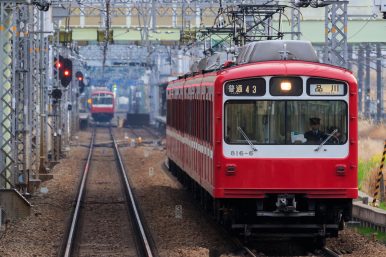By Xiaochen Su
 After years of watching Chinese-financed infrastructure blossom across Africa, Japan is finally getting in the game. At the 2016 Tokyo International Conference on African Development (TICAD), the Japanese government reportedly pledged $30 billion in financing, including $10 billion for infrastructure loans.
After years of watching Chinese-financed infrastructure blossom across Africa, Japan is finally getting in the game. At the 2016 Tokyo International Conference on African Development (TICAD), the Japanese government reportedly pledged $30 billion in financing, including $10 billion for infrastructure loans.
To be sure, the amount Japan pledged is much less than what China offers. The Diplomat reported that in 2018 alone, China pledged $60 billion in aid and loans. However, having an additional choice is good for African countries in need of infrastructural development.
That additional choice is particularly welcome today, given the increasing suspicions toward Chinese financing. As I argued in a 2017 article for The Diplomat, massive Chinese loans for building infrastructure saddle African countries with unsustainable debt. The resulting “debt traps” threaten African countries’ very sovereignty as they face the potential of ceding strategic assets to China as a form of debt repayment. African countries should think twice about taking up additional loans from China after witnessing Sri Lanka ceding a port and previously enthusiastic loan-takers like Malaysia and Pakistan distancing themselves from China-financed infrastructure projects.
One might argue that it is unfair to blame China wholesale for unsustainable infrastructure debt. After all, profitability in public transport projects is not easy to achieve. China’s signature infrastructure project in East Africa, the Nairobi-Mombasa railway, faced a loss of 10 billion Kenyan shillings ($99.4 million) in its first year of operations. The problem is not unique to China-backed projects in Africa. Even China’s own state-owned railway corporation is mired in unsustainable debt after a massive high-speed railway building spree. Insufficient revenue makes infrastructure loans difficult to repay, no matter who is doing the lending. Japan simply handing out more loans does not solve this problem.
However, what Japan can leverage better than China is a track record of turning public transport profitable, through a hybrid business model that combines money-losing transport and other, profitable businesses under the same company. To understand how such a business model works, one can take a look at Japanese private railway companies. For instance, the profit and loss statement of Keikyu Railways shows the company losing money for its railway operations before depreciation and amortization. But the company’s other businesses, including real estate construction and sales as well as the leisure industry (operating shopping centers and amusement facilities), turn a solid profit that more than compensates for losses from railway passenger service. Moreover, if one looks at the bigger Keikyu Group that includes Keikyu Railways as well as other companies involved in bus, taxi, food, insurance, car rental, and even golf resort operations, overall profitability is even higher.
The same trend — losses in railway operations but profitability in other businesses — can be seen in dozens of other private railway firms. In essence, Japan has made public transport a profitable business by turning transport providers into conglomerates, using loss-leading public transport to drive foot traffic into more profitable ventures.
This “conglomerate business model” for public transport is something that China does not have. With all railroads owned by the state, China does not have companies like Keikyu that made public transport profitable by diversifying into other businesses. As such, China is incapable of advising African railway firms on how to earn extra revenue outside passenger ticket sales and freight transport fees. With these firms exclusively dependent on the limited potential of passengers and freight for revenue, it is no wonder African infrastructure debt is unsustainable and large projects are loss-making despite heavy usage.
By exporting the conglomerate business model, Japan can counter Chinese dominance in African infrastructure funding. The business model used by Keikyu is very much applicable for inner-city railways in major African cities like Nairobi. If Japan transfers this business know-how, it can snatch clients away from China by pledging to rescue African governments from “debt traps.” If there is more assurance of running a profitable business from their borrowings, African governments would be more likely to choose Japanese loans over the Chinese, even if the former is less generous, more costly, and more stringent. And even in Chinese-financed projects, African governments may want Japanese involvement to help increase revenue for faster debt repayment. With so much publicized fear of “debt traps,” Africans should seek choices that give them better financial returns.
Xiaochen Su is a Ph.D. candidate at the University of Tokyo specializing in immigration issues. He previously worked in East Africa, Taiwan, South Korea, and Southeast Asia.
No comments:
Post a Comment